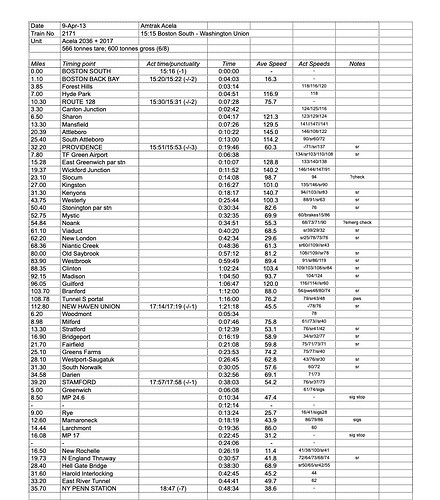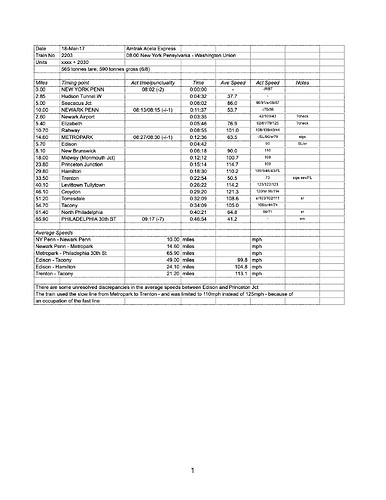There’s been a lot of discussion on HSR but I don’t think anyone has ever posted a speed log of an Acela before. So here are two. Courtesy of the Railway Performance Society of which I belong. Members post logs of train performances from around the world. For more info on the society please see https://rpsarchives.org.
These were the most current Acela logs in their archives. Two runs. One from Boston to New York 9 April 2013 and one from New York to Philadelphia 18 March 2017. Recorder was R Neville-Carle.
Fastest speeds were on the Boston New York run and specifically in Mass and Rhode Island where there are long tangents and new constant tension catenary allowing 150mph max.
New York to Philadelphia run was before constant tension was implemented so 135mph max. Today’s cat allows max 150mph in New Jersey.
Enjoy!
I’ve yet to ride an Acela. I was visiting my niece Kimberly in Boston about 20 years ago when I was still living in New York. She was from Texas originally and still a country girl at heart. I took her on her first train ride by taking the T from her home in Revere into Boston. She would always drive into Boston. She liked the T. While in Boston I said let’s ride the Acela to Providence as I’ve never been on it.
She asked what the Acela was and I said it’s a high speed train. She was game until I mentioned it went 150mph. Well that killed that. She was too afraid to ride it. “My F-150 gets all squirrelly over 90. I’m riding no train that goes 150.”

